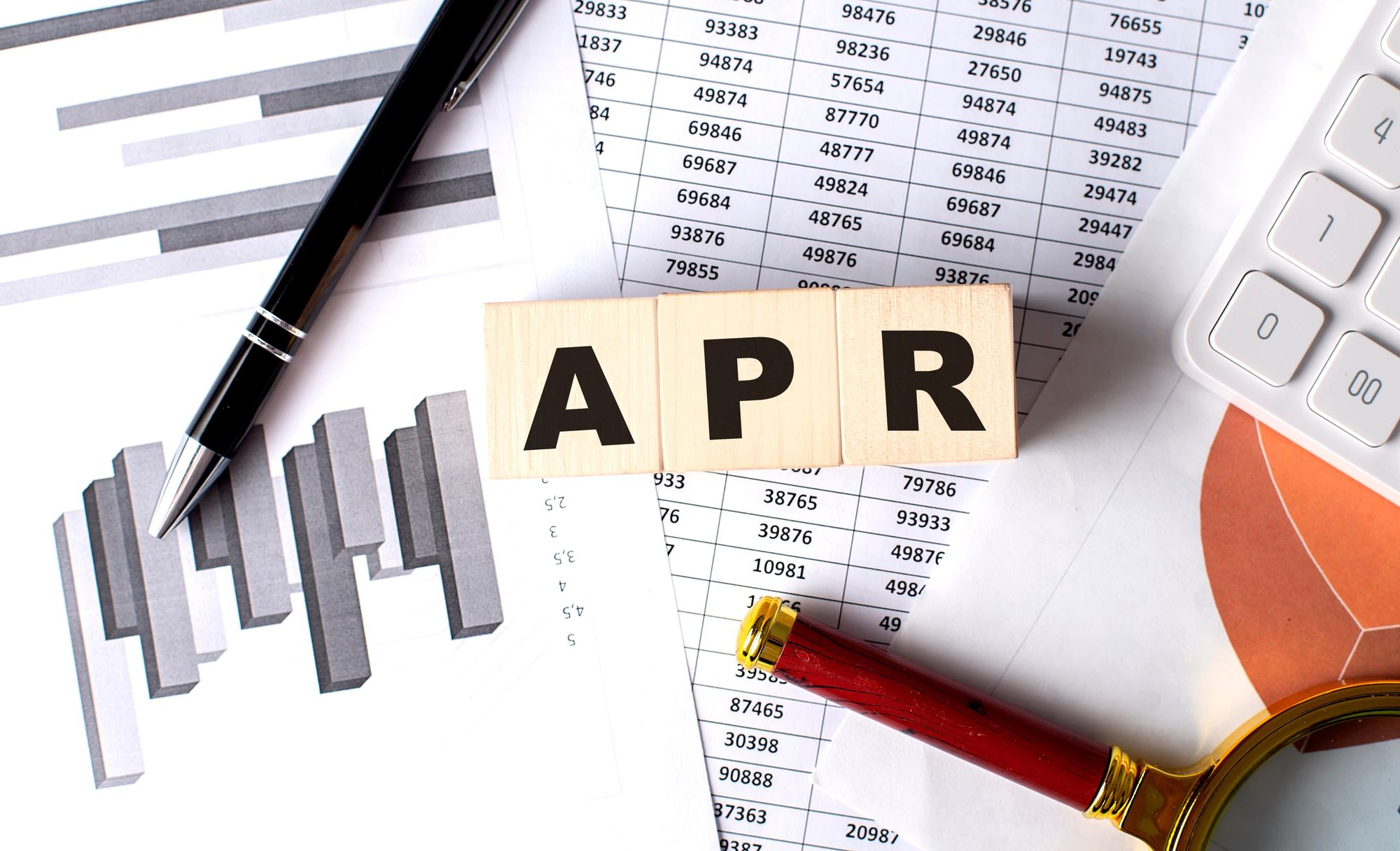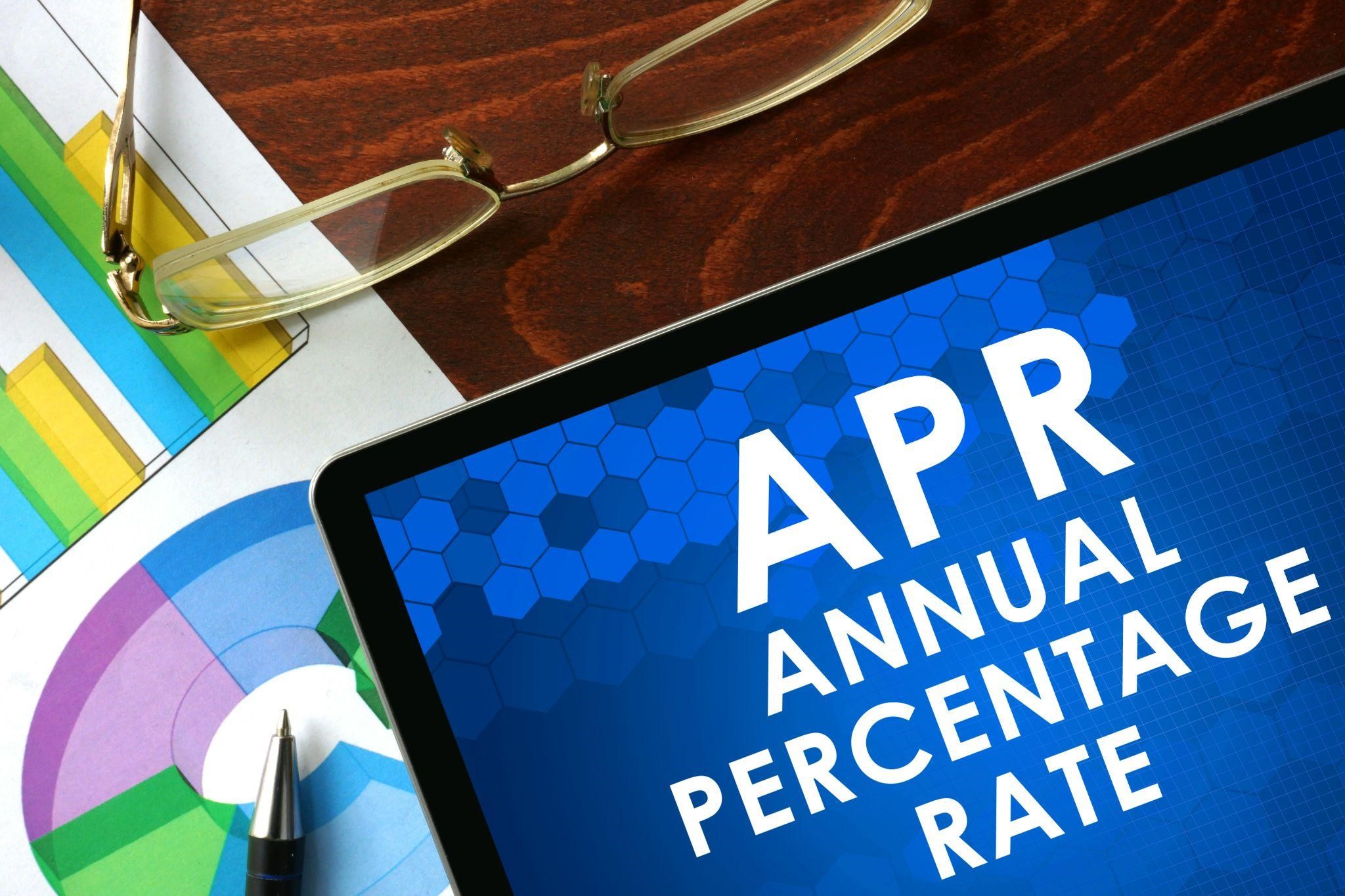An Annual Percentage Rate (APR) is the yearly interest generated by a sum that is changed to borrowers or paid to the Investors. Annual Percentage Rate or APR reflects the true cost of Borrowing. APR represents the price to borrow the money. The annual Percentage Rate or APR measures the yearly cost of borrowing money and includes the rate of interest and fees that come with the Mortgage Loans. The Annual Percentage Rate (APR) is the amount of interest on the borrower’s total mortgage loan amount that they will pay annually. A lower Annual Percentage Rate (APR) could translate to lower monthly Mortgage Payments.
The Annual Percentage Rate or APR is the yearly rate of interest that a borrower must pay on the Mortgage Loan, or receive on a deposit account. Annual Percentage Rate (APR) is expressed as a percentage that represents the actual yearly cost of funds over the term of a loan or income earned on an investment. The Annual Percentage Rate (APR) includes any fees or additional costs associated with the transaction but does not take compounding into account. The Annual Percentage Rate (APR) provides a consistent basis for presenting the annual interest rate information in order to protect consumers from misleading advertising.
The Annual Percentage Rate (APR) is the rate charged by the lenders on the borrowed amount on investment over the year. It is the cost of credit or borrowing, as it reveals the number of loans individuals shall repay at the end of tenure. The annual Percentage Rate (APR) is not the same as the Interest rate. It is broader than the rate of interest as it includes interest rates along with fees, mortgage brokerage, and other charges. Annual Percentage Rate (APR) is of two different types such as fixed and variable Annual Percentage Rate (APR). The Fixed Annual Percentage Rate (APR) does not respond to changes in the Index, whereas the Variable Annual Percentage Rate (APR) changes with the index interest rates.
What Is Annual Percentage Rate (APR)?
Annual Percentage Rate (APR) provides the best measure of how much borrowers pay for the Mortgage Loans each year. APR is an even more effective way of measuring a loan’s annual cost than its interest rates. An Annual Percentage Rate (APR) is the rate charged on a loan or earned on an investment over a year. In simple words, the Annual Percentage Rate (APR) is the measure of the cost of credit or borrowing expenses represented as a percentage amount every year. The Interest rate per payment period is multiplied by the number of payment periods in a year to arrive at this number. The Annual Percentage Rate (APR) in Mortgage Loan charges includes the loan points, loan origination fees, property inspection fees, Mortgage Insurance Premiums, Mortgage Broker fees (if any), and other Loan transaction costs.
How Does Annual Percentage Rate (APR) Work?
The Lenders calculate the Annual Percentage Rate (APR) not just based on the current interest rate environment and fees they charge. The stronger the borrower’s financial profile such as having a strong credit score and low debt-to-income ratio (DTI) the lower the Annual Percentage Rate (APR) will be. The Annual Percentage Rate (APR) should give a good idea of the loan’s overall cost, so it is a good comparison tool to use when shopping for the lenders and best deals. However, the fees associated with the Annual Percentage Rate (APR) can vary by the lender and borrowers will need to read each loan offer closely to see what’s included.

What Does Annual Percentage Rate (APR) Include?
Here are some of the fees the Annual Percentage Rate (APR) might factor in includes:
- Base Interest Rates: The Lender will charge the interest on money that a homebuyer borrows and will use that interest rate when calculating the monthly payments. The higher the interest rate, the higher the monthly payments. If the borrower’s interest rate is 7.2% then they have to pay more each month than if their rate was 6.5%.
- Document Preparation Fees: The Lenders will usually charge fees for preparing the documents that they will sign during the loan closing. This cost is included in the Mortgage’s Annual Percentage Rate (APR).
- Underwriting Fees: The Underwriting Fees cover the costs of the research that the lender’s underwriters perform when determining if they are willing and able to cover new Mortgage Payments. Underwriters will review the credit score, Bank Statements, W-2s, and paycheck stubs to verify Income and history with Paying bills.
- Origination Fees: The Annual Percentage Rate (APR) also includes the origination fees they will pay to the lender for the work. It does so while originating Mortgages. The Annual Percentage Rate (APR) includes this fee and it is always higher than the loan’s interest rates.
- Closing Costs: The closing costs include all the fees that the borrowers pay to their mortgage lenders and third-party providers including title insurers, real estate attorneys, inspectors, and appraisers who work on drafting a new mortgage.
What Are Types of Annual Percentage Rate (APR)?
There are two main types of Annual Percentage Rates (APR) when borrowing money:
- Variable Annual Percentage Rate (APR): A Mortgage Loan with a Variable Annual Percentage Rate (APR) comes with an Interest rate that can change over time, rising or falling according to whatever economic index the loan is tied to. A Mortgage with a Variable Annual Percentage Rate (APR), better known as an adjustable-rate mortgage, typically starts with an interest rate that is lower than what they would get with the traditional fixed-rate mortgage loan. After a certain number of years, usually 5 or 7 the mortgage loan enters its adjustable period. During this time, its Interest rate will change, typically rising or falling once every year.
- Fixed Annual Percentage Rate (APR): A Mortgage Loan with a Fixed Annual Percentage Rate (APR) comes with interest rates that do not change. The Interest rate on a 30-year or 15-year fixed-rate mortgage will remain the same from the first day of the mortgage loan all the way to its last.
How To Calculate Annual Percentage Rate (APR)?
The Borrowers don’t need to calculate the Annual Percentage Rate (APR), however, the Mortgage Lenders do the same for borrowers. In case, the borrowers are looking to double-check the lender’s work, then they can calculate the Annual Percentage Rate (APR) themselves by following these step-by-step process:
- Add up the fees and interest that will be paid over the loan term.
- Now, Divide that number by the Loan Principal.
- Now, Divide that figure by the number of days in the Loan Terms.
- Now, Multiply that answer by 365.
- Finally, Multiply that number by 100 to convert the Annual Percentage Rate (APR).
Here is the Formula to Calculate the Annual Percentage Rate (APR):
APR= ((Interest charges + fees) / Principal / n x 365) x 100
Where:
Interest =Total interest paid over the life of the loan
Principal =Loan amount
n = Number of days in loan term
Frequently Asked Questions (FAQs)
Question 1: Is the Annual Percentage Rate (APR) the same as the Interest Rate?
Answer: No, the Annual Percentage Rate (APR) is broader than the Interest Rate. The interest rates are those that have to be paid in regular monthly installments. On the other hand, Annual Percentage Rate (APR) includes interest rates, fees, loan points, brokerage, etc.
Question 2: Why Does Annual Percentage Rate (APR) Important?
Answer: Annual Percentage Rate (APR) is important as it helps in knowing the costs of borrowing a loan. It can help the borrowers decide whether or not a particular loan is affordable to them. Also, the Annual Percentage Rate (APR) helps in comparing the various loan options. these underlying charges are what make a loan expensive.
Question 3: What is Good Annual Percentage Rate (APR)?
Answer: A Good Annual Percentage Rate (APR) depends upon factors such as the strength of credit score, the type of mortgage the borrowers take out, and whether mortgage interest rates are high or low when a borrower is applying for financing.
Question 4: Does My Credit Score affect my Annual Percentage Rate (APR)?
Answer: Your Credit Score can cause the Annual Percentage Rate (APR) to rise or fall. Usually, The Mortgage Loan will come with a lower Annual Percentage Rate (APR) if your credit score is higher and a higher Annual Percentage Rate (APR) if it is lower.
Question 5: How Do Annual Percentage Rate (APR) Rates Work?
Answer: The Annual Percentage Rate (APR) is calculated considering the interest paid, the tenure of the loan taken, and other charges. In Addition, they include fees, Loan Points, and other related charges.
The Bottom Lines
When a borrower applies for a Mortgage, then lenders consider a variety of factors such as employment, credit score, income, debt, assets, and Down Payments to help them determine what rate of interest to offer. The Annual Percentage Rate (APR) is the annual interest earned on an amount paid to debtors or payable to investors. It is the Number that shows the real annual price of money throughout the life of debt or revenue received on an Investment.
